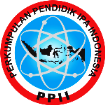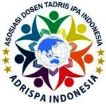Students’ Visualization Skills in Chemical Bonding through Three Dimension: A Study on Secondary School Chemistry Students
Abstract
Visual cognitive representation of chemical structures and composition is achieved when proper visualization is made by chemistry students. It is in respect this that, this study measured the students’ visualization skills in chemical bonding through three dimension: a study on secondary school chemistry students. The study adopted quasi-experimental group design where both experimental (students taught using 3D visualization) and control (students taught using 2D visualization) groups participated in pre-test and post-test but only the experimental group received the intervention as 3D visualization. The population for this research comprises all science senior secondary school one (SSS1) students under Sokoto State Ministry of Science and Technology, Sokoto State, Nigeria. A sample of 118 students purposively selected were used. The instrument used for this research was Students’ Visualization Test in Chemical Bonding (SVTCB). The measured reliability of the instruments was 0.72. Independent sample t-test was used to analyse data collected. The findings implies that, 3D visualization enhances students’ visualization skills in the learning of chemistry abstract concept irrespective of gender.
Keywords: Visual, Cognitive, Skills, Chemical Bonding, 3D
References
Badilla-Quintana, M. G., Sepulveda-Valenzuela, E., & Salazar Arias, M. (2020). Augmented Reality as a Sustainable Technology to Improve Academic Achievement in Students with and without Special Educational Needs. Sustainability, 12(19), 8116. https://doi.org/10.3390/su12198116
Behmke, D., Kerven, D., Lutz, R., Paredes, J., Pennington, R., Brannock, E., Deiters, M., Rose, J., & Stevens, K. (2018). Augmented Reality Chemistry: Transforming 2-D Molecular Representations into Interactive 3-D Structures. Proceedings of the Interdisciplinary STEM Teaching and Learning Conference, 2(1), 5–11. https://doi.org/10.20429/stem.2018.020103
Bello, F. S. (2015). Difficult Concepts in Chemistry and their Effects on the Achievement of Students. An Unpublished PhD Thesis, Usmanu Danfodiyo University, Sokoto, Nigeria.
Bergqvist, A., Drechsler, M., De Jong, O., & Rundgren, S. N. C. (2013). Representations of chemical bonding models in school textbooks-help or hindrance for understanding? Chemistry Education Research and Practice, 14(4), 589–606. https://doi.org/10.1039/c3rp20159g
Cademartiri, L., Bishop, K. J. M., Snyder, P. W., & Ozin, G. A. (2012). Using shape for self-assembly. Philosophical Transactions of the Royal Society A: Mathematical, Physical and Engineering Sciences, 370(1969), 2824–2847. https://doi.org/10.1098/rsta.2011.0254
Chen, S., & Liu, S. (2020). Using augmented reality to experiment with elements in a chemistry course. Computers in Human Behavior, 111(April), 1–12. https://doi.org/10.1016/j.chb.2020.106418
Chen, Y. (2006). A study of Comparing the Use of Augmented Reality and Physical Models in Chemistry Education. Proceedings of the 2006 ACM International Conference on Virtual Reality Continuum and Its Applications Pages, 1(June), 370–372.
Lim, C., & Park, T. (2013). Exploring the Educational Use of an Augmented Reality Books. ProQuest LLC, 172–182.
Lin, Y. I., Son, J. Y., & Rudd, J. A. (2016). Asymmetric translation between multiple representations in chemistry. International Journal of Science Education, 38(4), 644–662. https://doi.org/10.1080/09500693.2016.1144945
Mekni, M., & Lemieux, A. (2017). Augmented Reality: Applications, Challenges and Future Trends. In Applied Computational Science.
Merchant, Z., Goetz, E. T. T., Keeney-Kennicutt, W., Cifuentes, L., Kwok, O., & Davis, T. J. J. (2013). Exploring 3-D virtual reality technology for spatial ability and chemistry achievement. Journal of Computer Assisted Learning, 29(6), 579–590. https://doi.org/10.1111/jcal.12018.
Ngozi-Olehi, L. C., Duru, C. E., Uchegbu, R. I., & Amanze, K. O. (2018). Improving Interest and Performance in Organic Chemistry Pedagogy by Incooperating Animations. American Journal of Educational Research, 6(3), 277–280. https://doi.org/10.12691/EDUCATION-6-3-15
Ngussa, B. M. (2014). Application of ADDIE Model in instruction in teaching-learning transaction among teachers of Mara Conference Adventist secondary school, Tanzania. Journal of Education and Practice, 5(25), 99–105. www.iiste.org.
Padalkar, S., & Hegarty, M. (2015). Models as feedback: Developing representational competence in chemistry. Journal of Educational Psychology, 107(2), 451–466. https://doi.org/10.1037/a0037516
Sukarmin, S., Suyono, S., & Wasis, W. (2020). Remediation of Students’ Misconception Based on Their Learning Style through Guided Conceptual Change Strategies in the Concept of Electrochemistry. 1(Snk), 209–213. https://doi.org/10.2991/snk-19.2019.45
Swamy, N. K. L., & Dasgupta, C. (2018). Investigating the nature of students’ reasoning in connecting molecular structures of stereoisomers with their physical properties using an AR App. Proceedings - IEEE 9th International Conference on Technology for Education, T4E 2018, 53–60. https://doi.org/10.1109/T4E.2018.00018
Taber, K., S. (2013). Revisiting the chemistry triplet: drawing upon the nature of chemical knowledge and the psychology of learning to inform chemistry education. Chem. Educ. Res. Pract., 14(2), 156–168. https://doi.org/10.1039/C3RP00012E
Tasker, R., & Dalton, R. (2006). Research into Practice: Visualisation of the Molecular World Using Animations. Chemistry Education Research and Practice, 7(2), 141–159. https://doi.osrg/10.1039/B5RP90020Ds
DOI: http://dx.doi.org/10.24014/jnsi.v6i2.27212
Refbacks
- There are currently no refbacks.

Journal of Natural Science and Integration
E-ISSN: 2620-5092 P-ISSN: 2620-4967
Published By:
Department of Science Education, Faculty of Education and Teacher Training,
State Islamic University of Sultan Syarif Kasim Riau, Indonesia
Mailing Address:
Jl. H.R Soebrantas Km. 15 No. 155
Kelurahan Simpang Baru
Kecamatan Tuah Madani, Pekanbaru, Riau, Indonesia
Email: jnsi.tadrisipa@uin-suska.ac.id
Indexed By:
Journal of Natural Science and Integration is licensed under a Creative Commons Attribution 4.0 International License.


_-_Copyy2.png)






.jpg)
.png)
.jpg)
.jpg)




